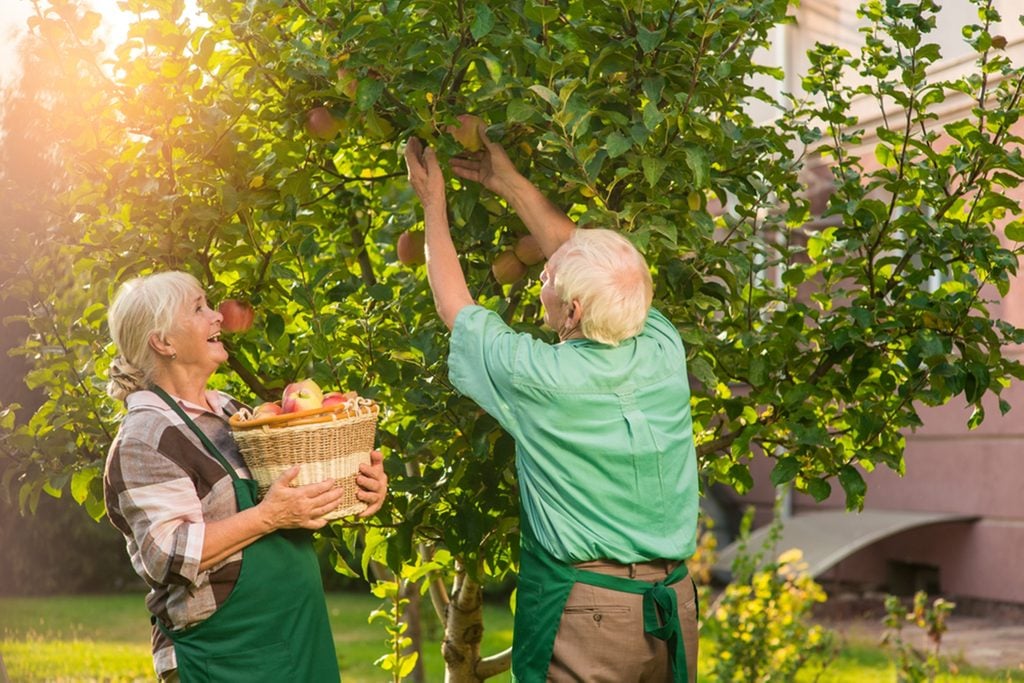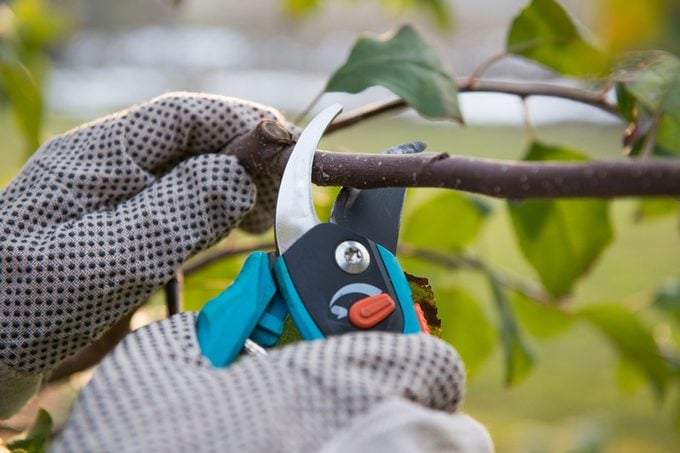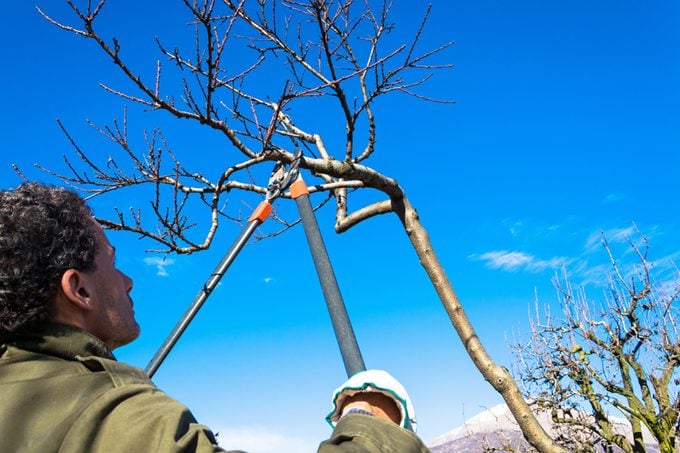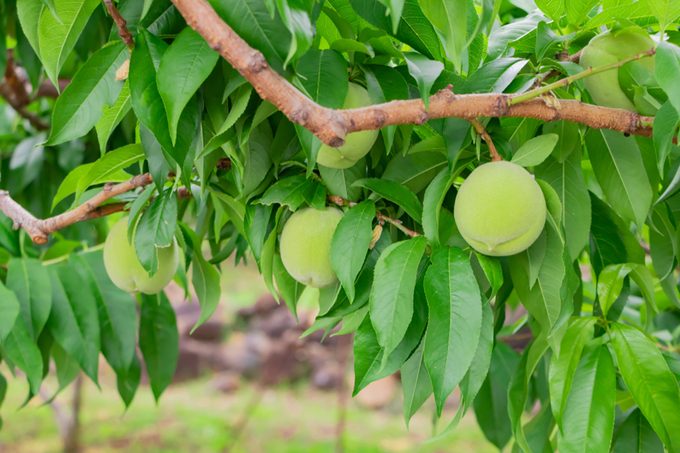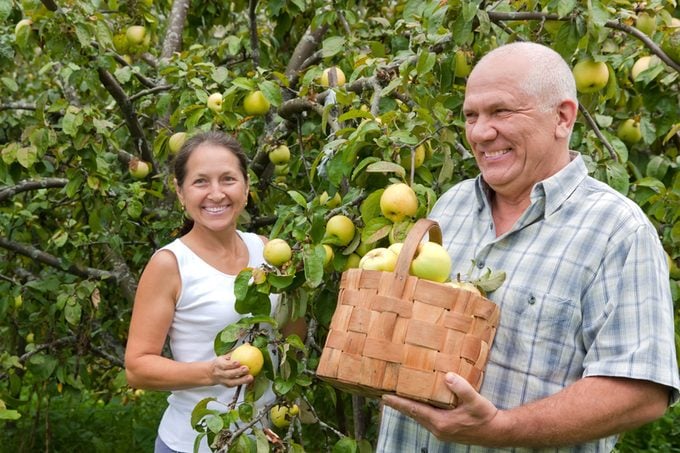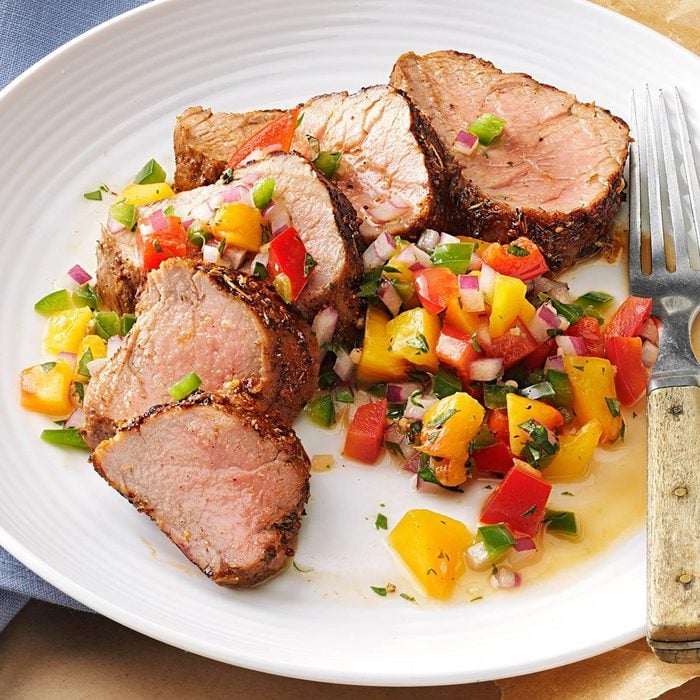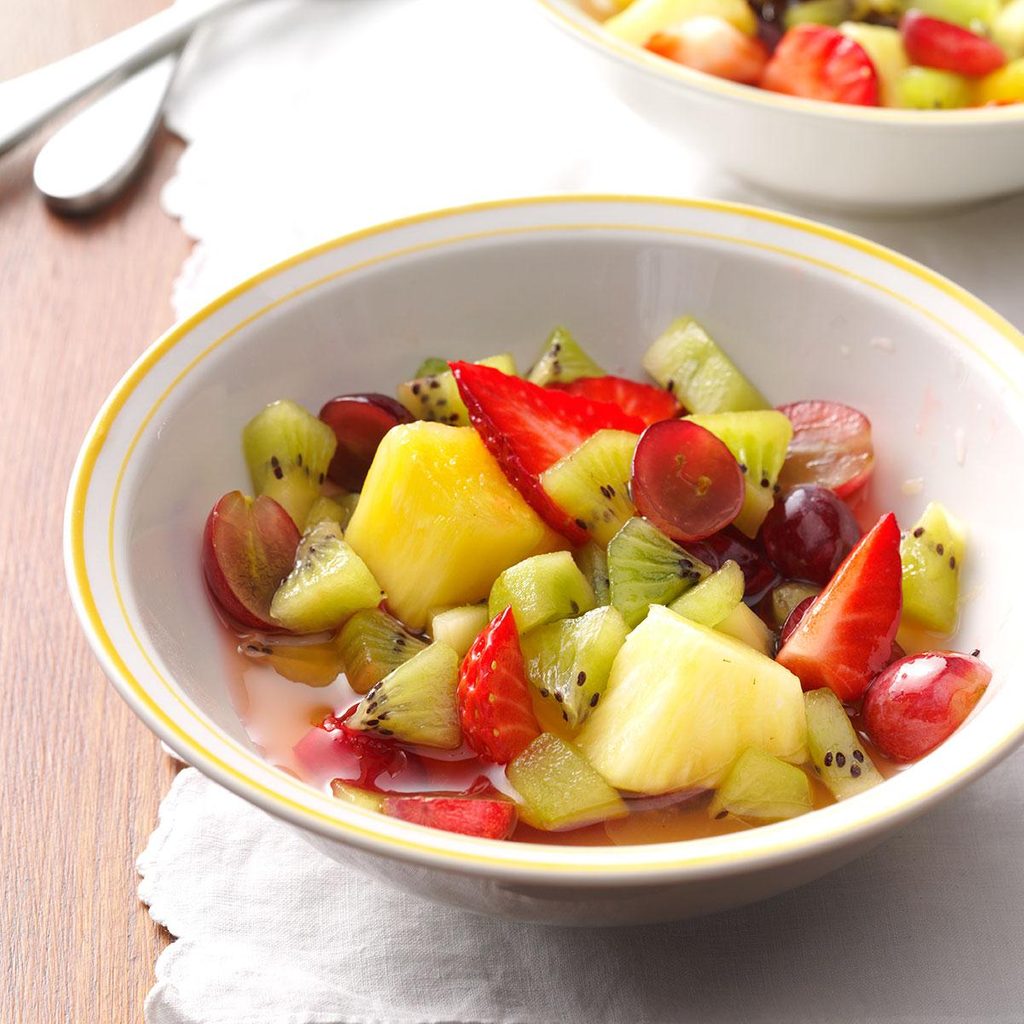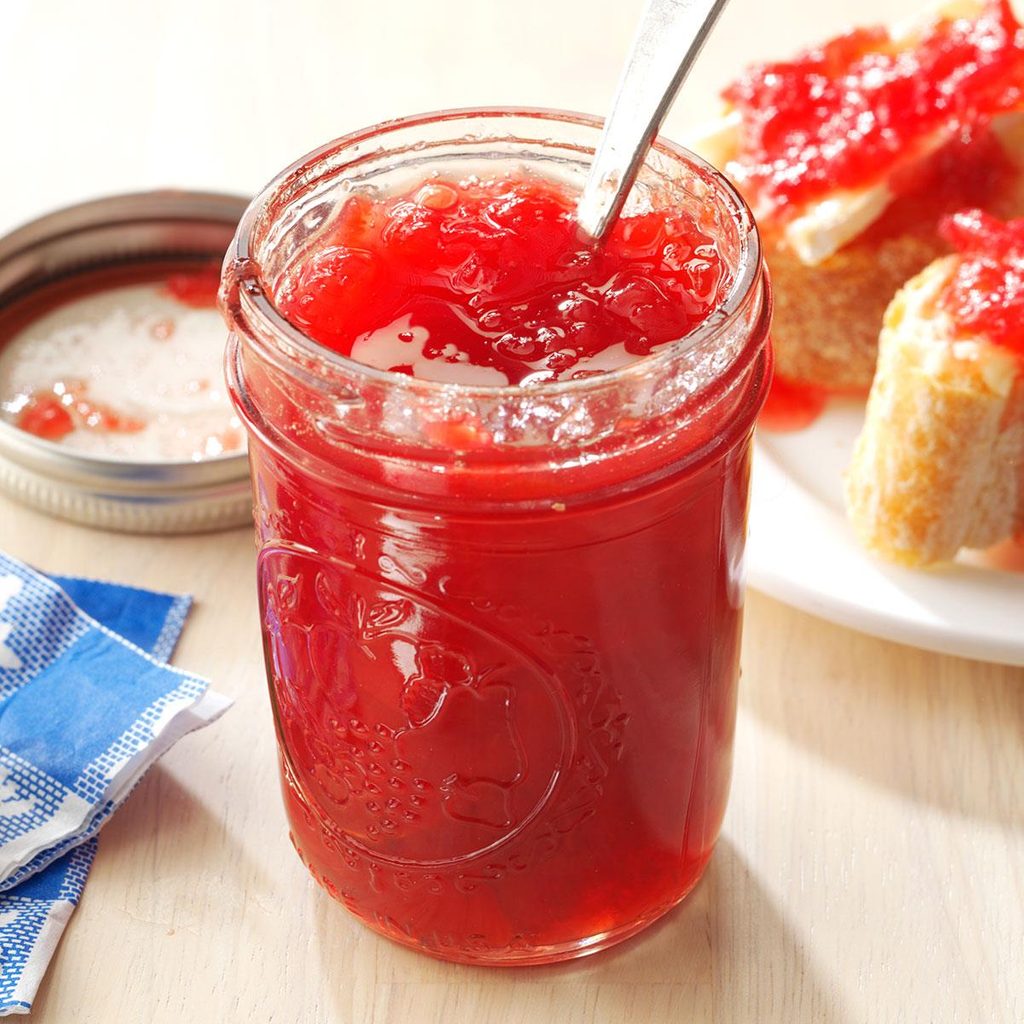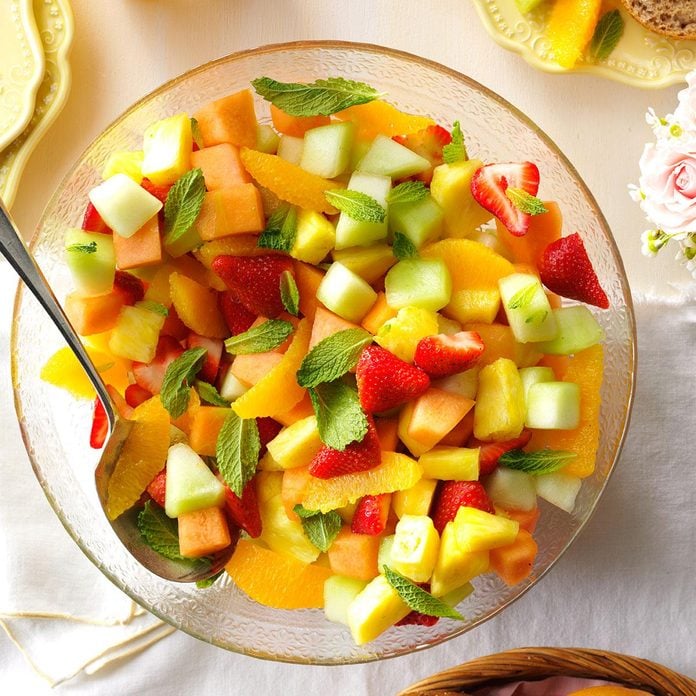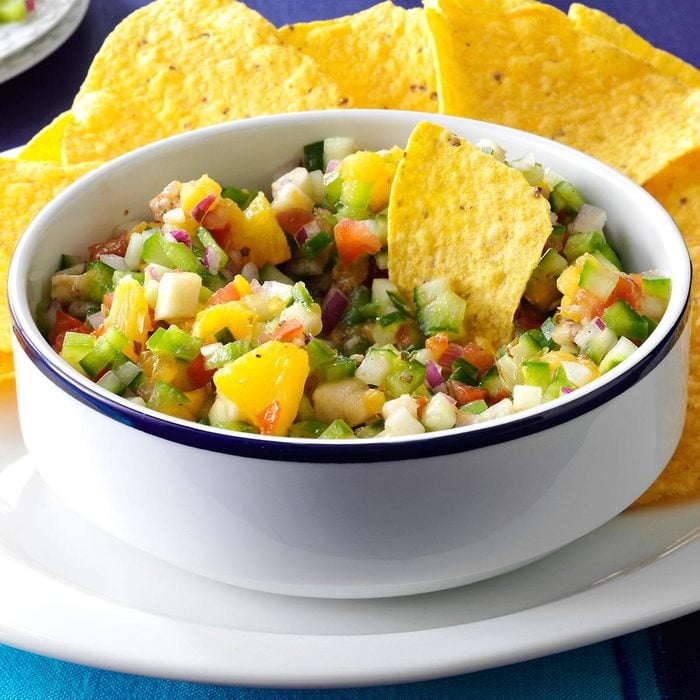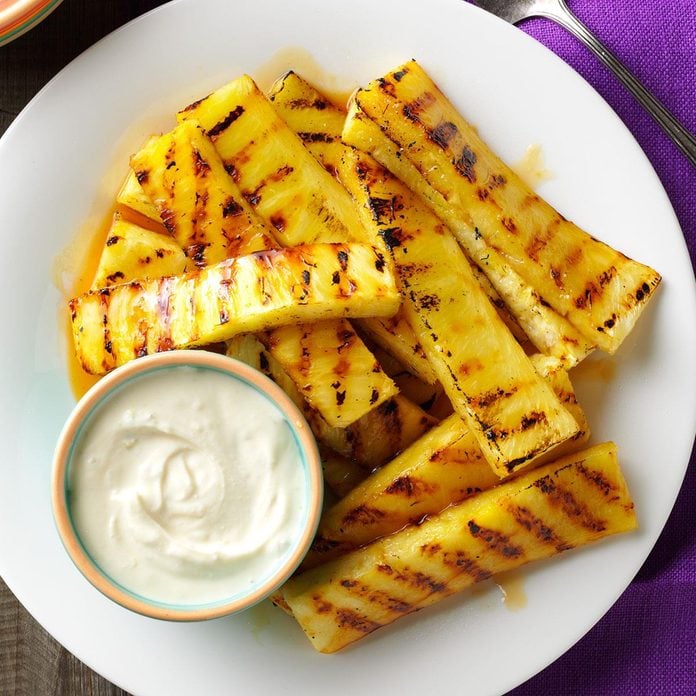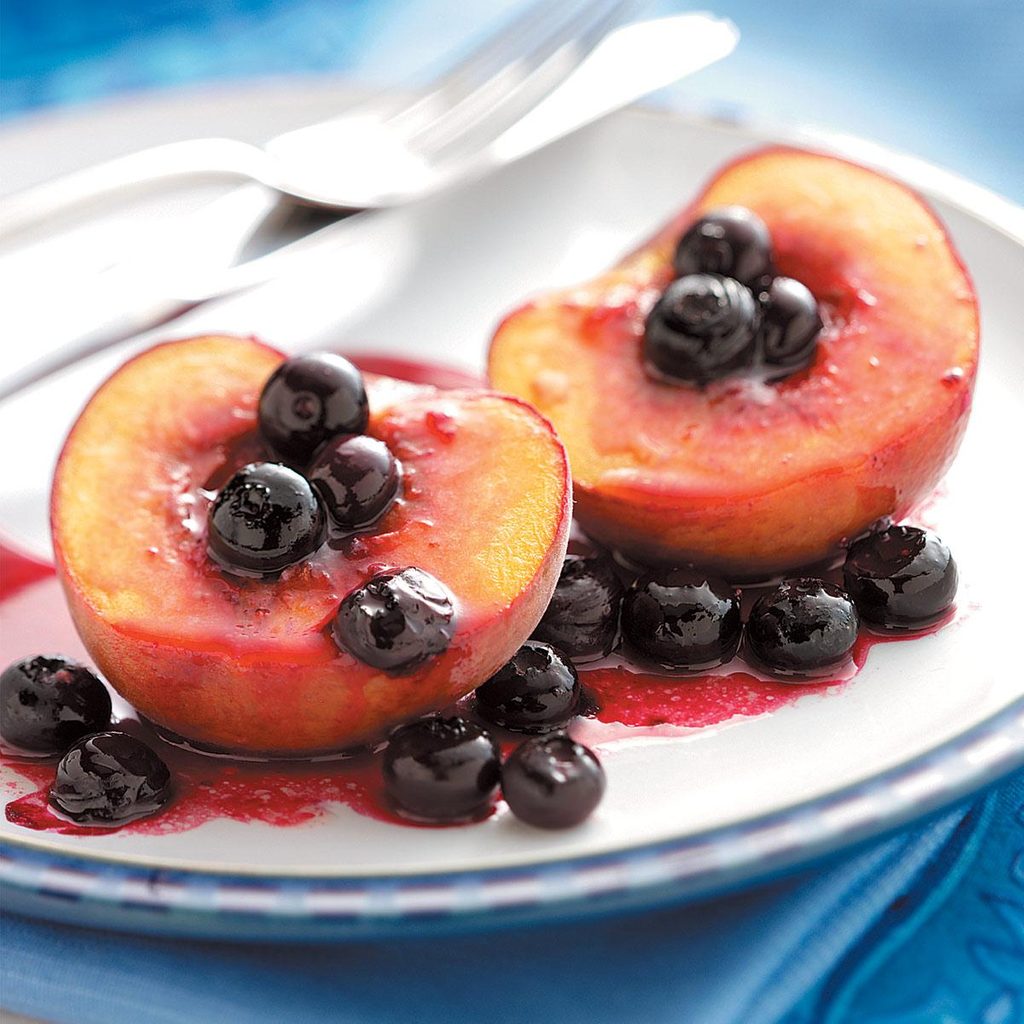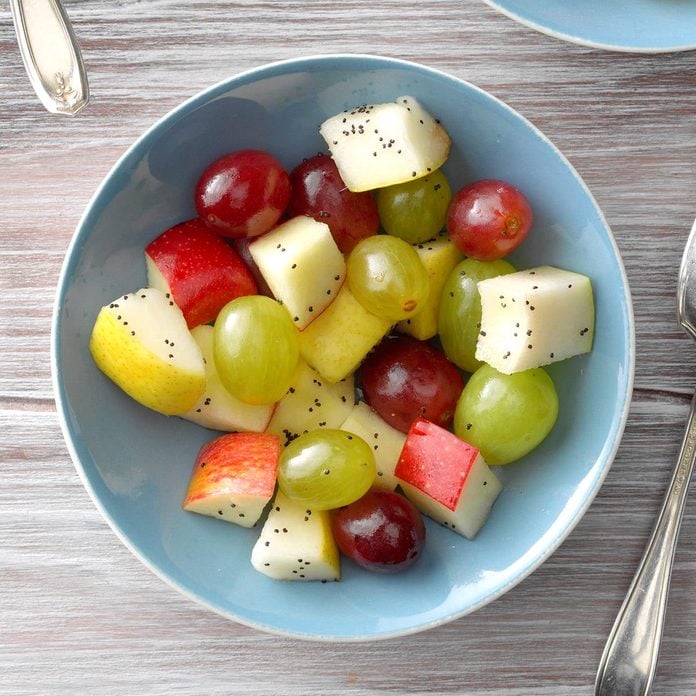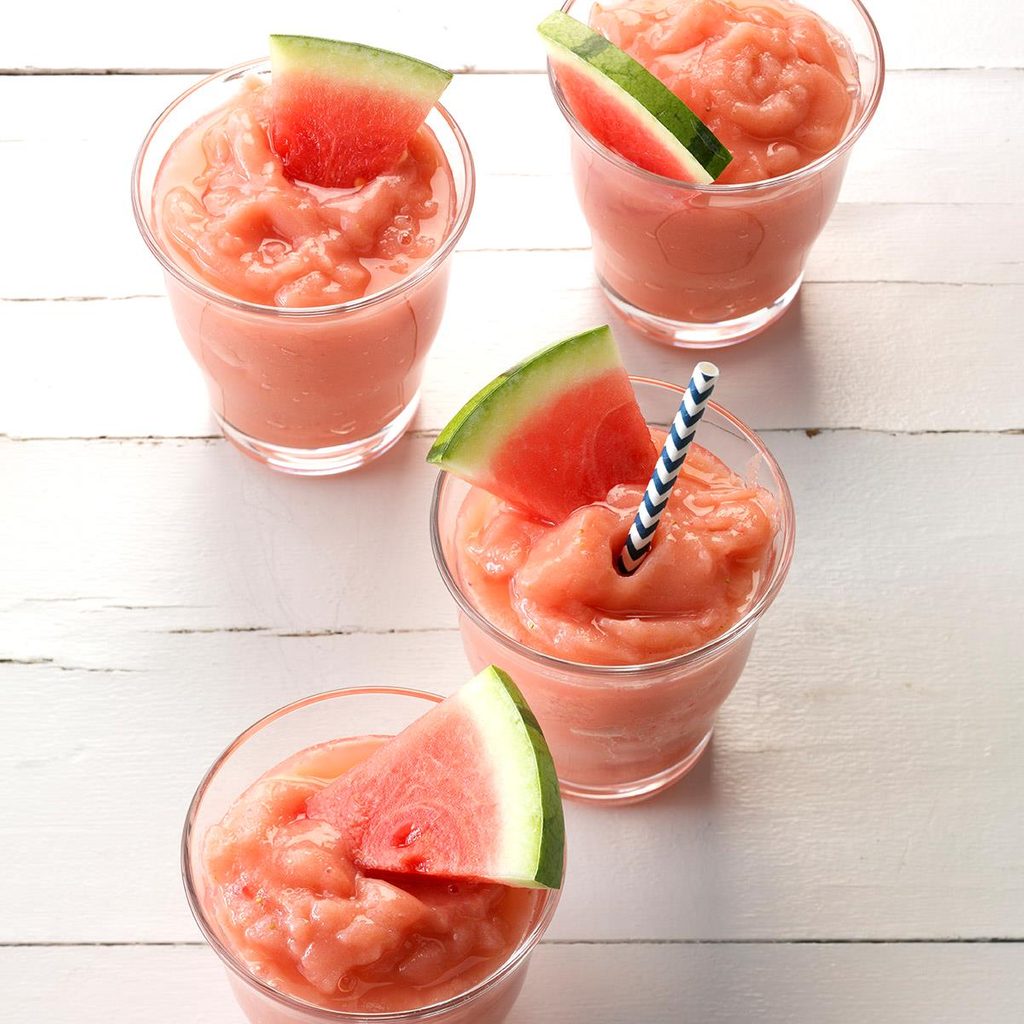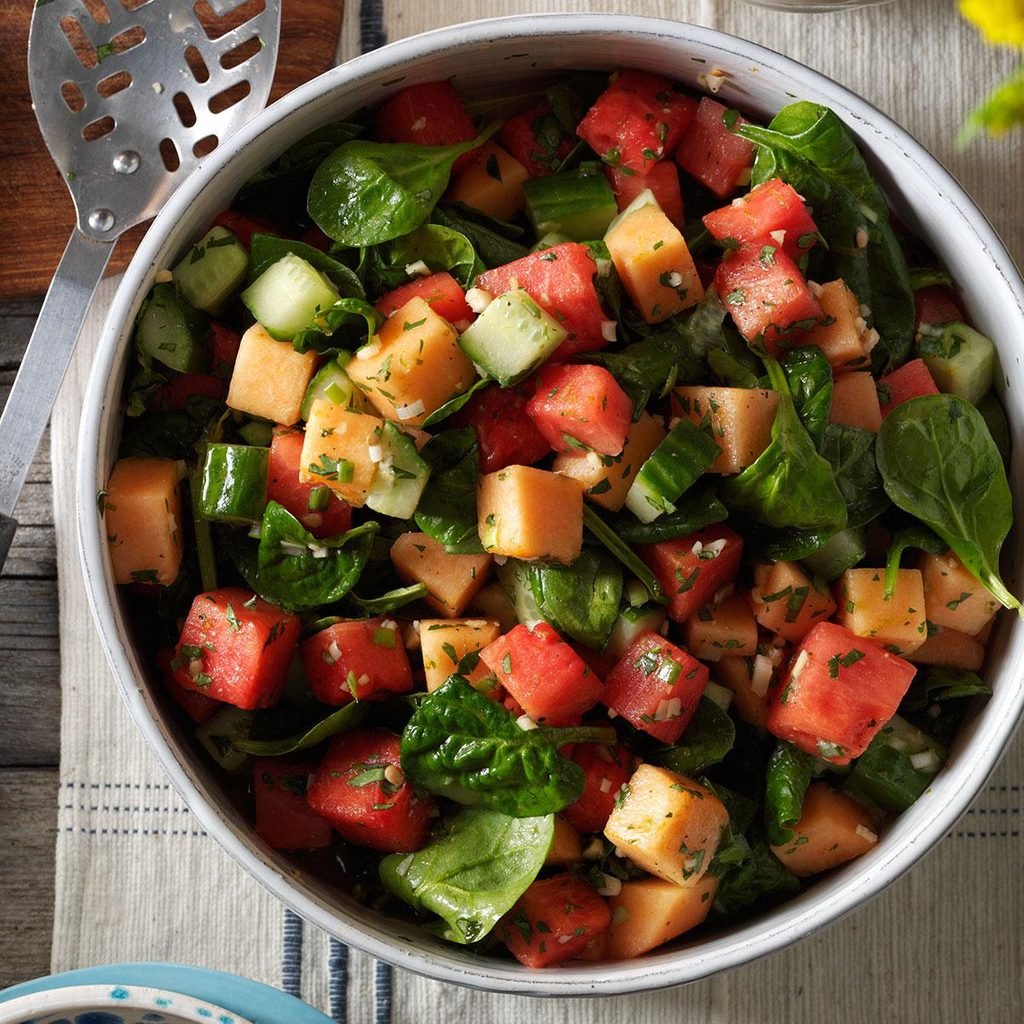Honey-Yogurt Berry SaladI wanted my family to eat more fruit but not more sugary ingredients. This berry salad lets you play with different low-fat yogurts and fruits. —Betsy King, Duluth, Minnesota
Caribbean-Spiced Pork Tenderloin with Peach SalsaI love this recipe because of the depth of flavors and burst of colors. It's quick and easy to make. It's best when peaches are in season, but you could try strawberries or pineapple instead. —Holly Bauer, West Bend, Wisconsin
Tequila-Lime Fruit SaladLooking for a fast, colorful side to round out any meal? This refreshing fruit salad is pure perfection! —Angela Howland, Haynesville, Maine
Topsy-Turvy SangriaI got this recipe from a friend a few years ago. Perfect for relaxed get-togethers. it’s even better if you make it the night before and let the flavors steep. But watch out—it goes down easy. —Tracy Field, Bremerton, Washington
Blueberry-Blackberry Rustic TartMy dad would always stop our car on the side of the road in Maine and say, "I smell blueberries." He had a pail ready. Then Mom would bake the wild berries in a cornmeal crust to make this homey tart. —Priscilla Gilbert, Indian Harbour Beach, Florida
Cast-Iron Peach CrostataWhile the crostata, an open-faced fruit tart, is actually Italian, my version's peach filling is American all the way. —Lauren Knoelke, Milwaukee, Wisconsin
Best Lime TartThis treat is the perfect balance between tart and sweet, and the almonds in the crust are just wonderful. This is one of my husband’s favorite desserts. Enjoy! —Charis O'Connell, Mohnton, Pennsylvania
Pineapple-Rhubarb JamRhubarb, pineapple and strawberry make an awesome jam that brings back memories of living on a farm and growing my own rhubarb. —Debbi Barate, Seward, Pennsylvania
Fresh Fruit BowlThe glorious colors of the fruit make this a festive salad. Slightly sweet and chilled, it makes a nice accompaniment to a grilled entree. —Marlon Kirst, Troy, Michigan
Barbecued Strawberry ChickenWhen it’s time to impress family and friends, we serve barbecued chicken garnished with strawberries. It’s easier than anyone would ever guess. —Bonnie Hawkins, Elkhorn, Wisconsin
Blackberry Cheesecake BarsSugar cookie dough is a speedy way to turn ricotta and mascarpone cheeses topped with blackberries into beautiful bars. — Terri Crandall, Gardnerville, Nevada
Cucumber Fruit SalsaOur garden always gives us way more cucumbers and tomatoes than we know what to do with. But we’ve learned how to handle the unexpected with a surprise of our own. This is our pretty, fresh way to use up the bounty. —Anna Davis, Springfield, Missouri
Grilled Pineapple with Lime DipServe this dish as an appetizer or a dessert—the choice is yours! If desired, the pineapple spears can be rolled in flaked coconut before grilling. —Taste of Home Test Kitchen, Milwaukee, Wisconsin
Honey-Pecan Kiwi SaladThis dish won second place in a summer salad recipe feature published in our local newspaper. But it takes first place with my family, always happy to try my new creations. —Marla Arbet, Kenosha, Wisconsin
Irresistible Grilled Shrimp with Fruit SalsaThese skewers are super lean and scrumptious—especially when dipped in the fresh fruit salsa. We rave about the salsa's sweet heat and the shrimp's party-pretty look. —Agnes Ward, Stratford, Ontario
Red, White and Blue Frozen LemonadeThis patriotic drink is as pretty as it is delicious. With cherries, blueberries and lemon juice, we created a striped lemonade that is perfect for a Fourth of July celebration. —Shawn Carleton, San Diego, California
Grilled Peaches 'n' BerriesWith only five ingredients, this delightful dessert is so easy to prepare. Just halve peaches and sprinkle with fresh blueberries and a brown sugar mixture. Because they're grilled in foil, there are no messy dishes to wash. —Sharon W. Bickett, Chester, South Carolina
Lime-Honey Fruit SaladNothing is more refreshing to me than a seasonal fruit salad enhanced with this simple honey-lime dressing. —Victoria Shevlin, Cape Coral, Florida
Fruit TartIt's well worth the effort to whip up this creamy fruit tart bursting with juicy berries. A friend gave me the recipe, and it always receives rave reviews at gatherings. —Susan Terzakis, Andover, Massachusetts
Tangy Poppy Seed Fruit SaladFor a fruit salad that’s delightful, we combine berries and citrus with a honey-lime dressing flecked with poppy seeds. —Carrie Howell, Lehi, Utah
Spiced Peach CobblerWhen you tuck into this warm and comforting fresh peach cobbler, you won’t miss the extra fat and calories a bit! —Mary E. Relyea, Canastota, New York
Rhubarb Berry Upside-Down CakeI had leftover rhubarb and wanted to create something fresh. With blueberries, strawberries and dried cranberries on hand, I discovered I had a berry upside-down cake. —June Paul, Portage, Wisconsin
Strawberry Watermelon SlushWe like to relax on the back porch with glasses of my slush after a long, hot day. Strawberries and watermelon blend up with lemon juice and sugar for an instant refresher. —Patty Howse, Great Falls, Montana
Watermelon SharkTake a bite out of summer boredom with this kid-friendly food project. —Taste of Home Test Kitchen
Blueberry Zucchini SquaresI saw a bar recipe using apple and lemon zest on a muffin mix. I tried it from scratch with shredded zucchini and fresh blueberries instead. It’s a nifty combo. —Shelly Bevington, Hermiston, Oregon
Aunt Frances' LemonadeMy sister and I spent a week each summer with our Aunt Frances, who always had this thirst-quenching lemonade in a stoneware crock in her refrigerator. It makes a refreshing drink after a hot day of running around. —Debbie Reinhart, New Cumberland, Pennsylvania
Lemon-Berry ShortcakeThis simple lemon shortcake is tender and not overly sweet. Enjoy this summertime classic with a generous layer of whipped topping and berries. —Meryl Herr, Overland Park, Kansas
Raspberry Pie SquaresMaking pie for a crowd may seem impossible, but not when you turn to this crowd-pleasing recipe! The sweet-tart raspberry filling pairs well with a flaky homemade pastry. —Taste of Home Test Kitchen
Summer Dessert PizzaEspecially refreshing during the summer months, this dessert lets fresh fruit shine. —Ida Ruth Wenger, Harrisonburg, Virginia
Iced Raspberry TeaFrozen raspberries lend fruity flavor and lovely color to this pretty iced tea that's good throughout the year. The recipe calls for just a few common ingredients and offers make-ahead convenience. —Lois McGrady, Hillsville, Virginia
Lemon Supreme PieA friend and I often visit a local restaurant for pie and coffee. When they stopped carrying our favorite lemon supreme pie, I got busy in the kitchen and created this version, which we think tastes even better! The combination of the cream cheese and tart lemon is wonderful. —Jana Beckman, Wamego, Kansas
Wild Plum JellyI've had this wild plum jelly recipe for ages. Each year when the plums are ripe, I'll fill my pail and make this jelly. It's so good served with toast, pancakes or waffles! —Ludell Heuser, Mount Horeb, Wisconsin
Watermelon and Spinach SaladSummer's the perfect time to toss up this watermelon salad. You'd never expect it, but spinach is awesome here. Eat it and feel cool on even the hottest days. —Marjorie Au, Honolulu, Hawaii
Red, White & Blue Berry TrifleThis luscious trifle tastes best if made the day before serving. Keep additional berries on hand for decoration. —Kaia McShane, Munster, Indiana
Blueberry Ice CreamThe wild blueberries on our property spark recipe ideas. When my daughter and I made this ice cream at a Girl Guide meeting, it was well received. Even today, our 10 children, 19 grandkids and 4 great-grandchildren think it tastes great. —Alma Mosher, Mohannes, New Brunswick
Rainbow SpritzerLayers of colorful fruit submerged in a fizzy, sweet beverage make this a kid-friendly sipper that gets two thumbs-up. —Taste of Home Test Kitchen
Georgia Peach Ice CreamMy state is well known for growing amazing peaches. This ice cream has been a family favorite for more than 50 years! —Marguerite Ethridge, Americus, Georgia
Shrimp & Nectarine SaladFor a cool salad on a hot summer day, I combine shrimp, corn, tomatoes and nectarines with a drizzle of tarragon dressing. We love it chilled, but it's delectable served right away, too. —Mary Ann Lee, Clifton Park, New York
